|
|
Post by jkjblue on Dec 22, 2014 21:06:05 GMT
 bigblue1840-1940.blogspot.com/2014/12/ClassivStampsofPenrhynIsland.html bigblue1840-1940.blogspot.com/2014/12/ClassivStampsofPenrhynIsland.htmlPenrhyn Island (Tongareva) is the largest atoll, and the most remote of the 15 Cook Islands. It consists of a 77 km or 48 mile (in diameter) coral ring with elevation no more than 5 meters. The coral ring has a center lagoon. I suspect only philatelists, Pacific ocean yacht owners, and assiduous National Geographic readers are aware of Penrhyn Island. ;-) |
|
|
|
Post by jkjblue on Dec 28, 2014 22:59:58 GMT
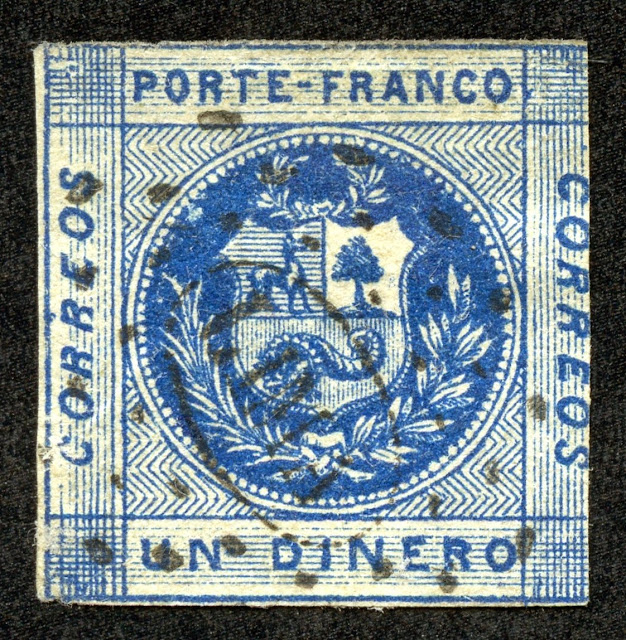 bigblue1840-1940.blogspot.com/2014/12/ClassicStampsofPeru.html bigblue1840-1940.blogspot.com/2014/12/ClassicStampsofPeru.htmlThe War of the Pacific (1879-1883) was devastating for Peru, as they were defeated by the Chileans. (One can argue the Bolivians had even a worse result, as they lost the Litoral Province and their sea access to Chile.) Lima was occupied (1881), and the nitrate rich territory of Tarapaca was acquired by Chile. It took until 1929 to solve the Arica province (to Chile) and the Tacna province (to Peru) territorial disputes. |
|
rod222
Member 
Posts: 11,064  What I collect: Worldwide Stamps, Ephemera and Catalogues
What I collect: Worldwide Stamps, Ephemera and Catalogues
|
Post by rod222 on Dec 29, 2014 20:01:04 GMT
bigblue1840-1940.blogspot.com/2014/12/ClassicStampsofPeru.htmlThe War of the Pacific (1879-1883) was devastating for Peru, as they were defeated by the Chileans. (One can argue the Bolivians had even a worse result, as they lost the Litoral Province and their sea access to Chile.) Lima was occupied (1881), and the nitrate rich territory of Tarapaca was acquired by Chile. It took until 1929 to solve the Arica province (to Chile) and the Tacna province (to Peru) territorial disputes. Another cracking post from Jim, love this stuff. Stamps with History. |
|
|
|
Post by jkjblue on Jan 10, 2015 5:17:39 GMT
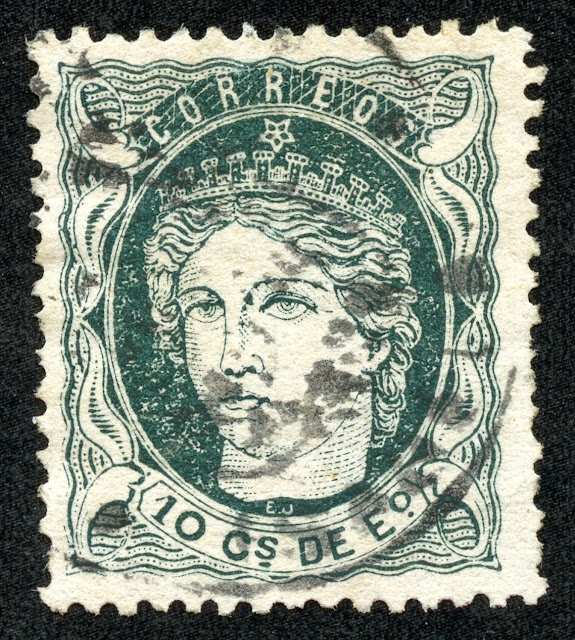 bigblue1840-1940.blogspot.com/2015/01/ClassicalStampsofthePhilippines.html bigblue1840-1940.blogspot.com/2015/01/ClassicalStampsofthePhilippines.htmlThe Philippines are a group of 7,107 islands in the western Pacific Ocean, and were initially colonized by the Spanish after their "discovery" by Ferdinand Magellan in 1521. As part of the Spanish Empire for 300 years, the inhabitants adopted Roman Catholicism, while Manila, the capital, became part of the Manila-Acapulco galleon trade between the 16th and 19th centuries. Stamps were introduced in 1854, and closely follow in design those of Spanish Cuba, except for denomination. |
|
|
|
Post by jkjblue on Jan 15, 2015 20:21:10 GMT
 bigblue1840-1940.blogspot.com/2015/01/ClassicalStampsofPoland.html bigblue1840-1940.blogspot.com/2015/01/ClassicalStampsofPoland.htmlNo country has been ripped apart, and put back together as many times as Poland. But after WW I, Poland was reconstituted as the Second Polish Republic. Independence was achieved on November 9, 1918. The stamps reflected this euphoria, with themes such as "Sower and Rainbow of Hope", and "Sun breaking out of Darkness". |
|
|
|
Post by jkjblue on Jan 21, 2015 20:17:31 GMT
|
|
|
|
Post by jkjblue on Jan 27, 2015 18:49:33 GMT
 bigblue1840-1940.blogspot.com/2015/01/ClassicStampsofPortugal.html bigblue1840-1940.blogspot.com/2015/01/ClassicStampsofPortugal.htmlOn the western coast of the Iberian Peninsula, Portugal, for classical era stamp collectors, is best known for the exotic and obscure colonies scattered across the globe. The problem, though, was the slow decline in Portuguese power that lasted from the invasion of Napoleon up to the 20th century. The largest blow was the independence of Brazil in 1822. |
|
rod222
Member 
Posts: 11,064  What I collect: Worldwide Stamps, Ephemera and Catalogues
What I collect: Worldwide Stamps, Ephemera and Catalogues
|
Post by rod222 on Jan 28, 2015 2:40:51 GMT
bigblue1840-1940.blogspot.com/2015/01/ClassicStampsofPortugal.htmlOn the western coast of the Iberian Peninsula, Portugal, for classical era stamp collectors, is best known for the exotic and obscure colonies scattered across the globe. The problem, though, was the slow decline in Portuguese power that lasted from the invasion of Napoleon up to the 20th century. The largest blow was the independence of Brazil in 1822. Best known to me, as the country that allowed one Arthur Wellesley (1st Duke of Wellington) a fingernail grip on the peninsular. A tiny bit of dirt, that allowed him to get stuck into Napoleon. We owe them eternal thanks. I may stand corrected, but I have always seen the Portuguese mainly as Traders, not colonisers a large part of why they lost so much territory. |
|
|
|
Post by jkjblue on Feb 2, 2015 21:46:45 GMT
|
|
|
|
Post by jkjblue on Feb 8, 2015 23:50:12 GMT
 bigblue1840-1940.blogspot.com/2015/02/ClassicalStampsofthePortugueseCongo.html bigblue1840-1940.blogspot.com/2015/02/ClassicalStampsofthePortugueseCongo.htmlThe Portuguese Congo (now the Enclave of Cabinda and the northernmost province of Angola) was a strip of land on the west coast of Africa separated by 40 miles (60 kilometers) from Angola and the Congo River. Cabinda (the settlement) originally served as a harbor and port for Portuguese slave trade. Portugal proclaimed sovereignty over the territory in 1885, and it was given the status as a protectorate of the Portuguese crown. Stamps were first issued in 1894. |
|
|
|
Post by jkjblue on Feb 14, 2015 23:01:25 GMT
|
|
|
|
Post by jkjblue on Feb 21, 2015 0:23:49 GMT
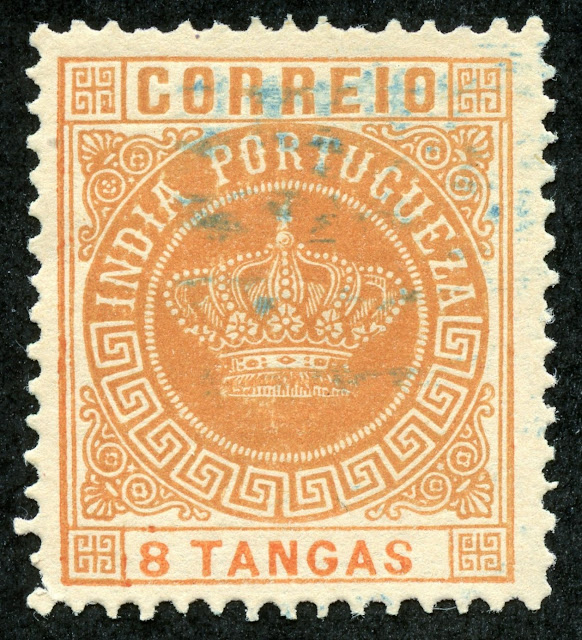 bigblue1840-1940.blogspot.com/2015/02/ClassicalStampsofPortugueseIndia.html bigblue1840-1940.blogspot.com/2015/02/ClassicalStampsofPortugueseIndia.htmlPortugal and India have been interacting with each other ever since Vasco da Gama landed in Calicut on the Malabar Coast in 1498. Portuguese India ( Estado da India Portuguesa), a colonial state, was founded in 1505, and the capital was Cochin through 1530, then Nova Goa. Goa (1510) became the most important settlement; and , in fact, "Portuguese India" was often referred to as "Goa". A post office was opened in Goa in 1854, and stamps for local use within the colony were issued in 1871. |
|
|
|
Post by jkjblue on Feb 27, 2015 1:06:15 GMT
 bigblue1840-1940.blogspot.com/2015/02/ClassicStampsofPrinceEdwardIsland.html bigblue1840-1940.blogspot.com/2015/02/ClassicStampsofPrinceEdwardIsland.htmlAnne of the Green Gables (1908) , a novel set in Victorian times on Prince Edward Island, forms for many, the first exposure to the people and landscape of this small province, located in the Canadian Maritimes. The island was renamed from St.John's Island (because of confusion with the cities of St. John's in New Brunswick and Newfoundland) to Prince Edward Island in 1798 in honor of Prince Edward, the fourth son of King George III. As it turned out, the choice was also fortuitous, as Alexandrina Victoria was born in 1819, and Edward, then, was the father of the Queen. Stamps were introduced in 1861, and sixteen stamps were forthcoming through 1872, when the British colony elected to join the Dominion of Canada on July 1, 1873. |
|
rod222
Member 
Posts: 11,064  What I collect: Worldwide Stamps, Ephemera and Catalogues
What I collect: Worldwide Stamps, Ephemera and Catalogues
|
Post by rod222 on Feb 27, 2015 13:41:17 GMT
Anne of the Green Gables (1908) , a novel set in Victorian times on Prince Edward Island, forms for many, the first exposure to the people and landscape of this small province, located in the Canadian Maritimes. One of my most favourite of Films, Anne of Green Gables, so much so I bought the DVD's, Makes a lovely bookend pair with "The Winslow Boy" starring Nigel Hawthorne ("Yes Minister") 1999 Films of sensibility. Look forward to reading you blog. |
|
|
|
Post by jkjblue on Mar 5, 2015 0:06:05 GMT
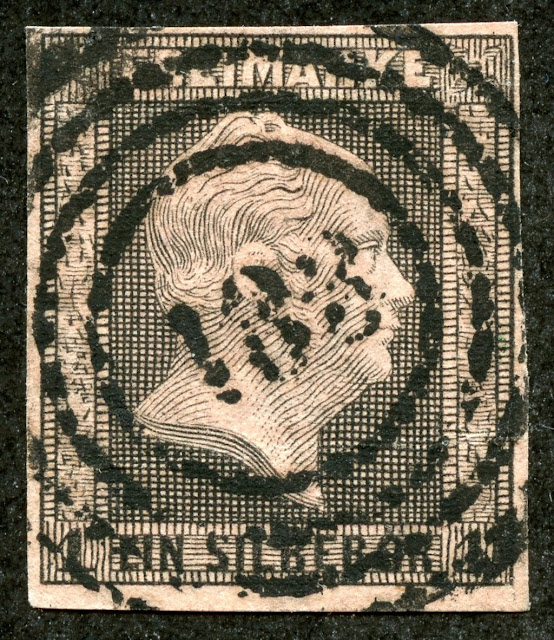 bigblue1840-1940.blogspot.com/2015/03/ClassicStampsofPrussia.html bigblue1840-1940.blogspot.com/2015/03/ClassicStampsofPrussia.htmlPrussia was, by far, the leading German Kingdom, and in 1871 the German Empire was created under it's domination. But before Prussia was part of the North German Confederation and the German Empire, it was a separate Kingdom that issued stamps between 1850-1867. The 1850-1860 stamps had the monarch King Frederick William IV (Reign 1840-1861) as the subject. A romantic and a conservative, he was followed in 1861 by his brother William I (Wilhelm I). William I (Reign 1861-1888, with 1871-1888 as German Emperor) and Chancellor Otto von Bismarck (In office 1871-1890) unified Germany under their leadership. |
|
|
|
Post by jkjblue on Mar 10, 2015 18:48:47 GMT
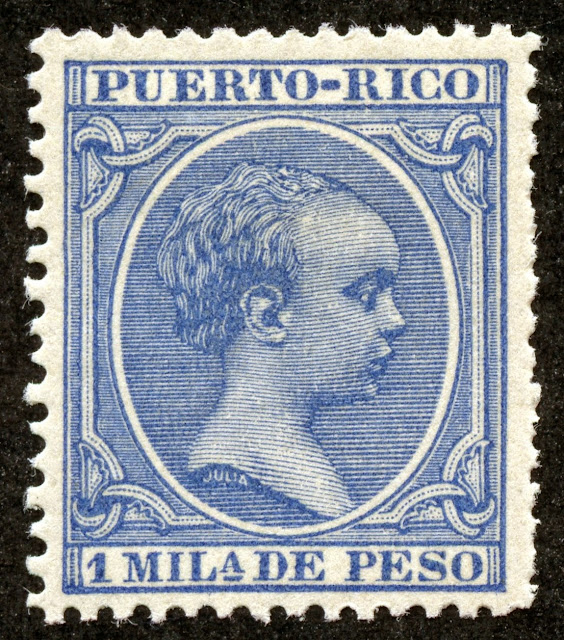 bigblue1840-1940.blogspot.com/2015/03/ClassicalStampsofPuertoRico.html bigblue1840-1940.blogspot.com/2015/03/ClassicalStampsofPuertoRico.htmlThe island of Puerto Rico in the West Indies was, like Cuba, under Spanish Dominion from November 19, 1493 ( Christopher Columbus second voyage) until 1898, when Spain was obligated to cede the island to the United States following the Spanish-American War. Stamps of Cuba overprinted in black were used in Puerto Rico in 1873, and the Spanish colony received its own issues beginning in 1877. U.S. administration overprinted issues began in 1898, but were replaced by those of the United States in 1900. U.S. citizenship for Puerto Ricans was granted in 1917. |
|
|
|
Post by jkjblue on Mar 16, 2015 21:13:59 GMT
 bigblue1840-1940.blogspot.com/2015/03/ClassicalStampsofQueensland.html bigblue1840-1940.blogspot.com/2015/03/ClassicalStampsofQueensland.html"Queensland Day" is celebrated every year on June 6th, as that was when Queen Victoria in 1859 signed the Letters Patent separating Queensland from New South Wales. Queensland then became a founding state within the Federation of Australia on January 1, 1901. No longer part of New South Wales, stamps for Queensland proper were introduced on November 1, 1860. Stamps were issued through 1909, as the Australia 'Roo stamps did not begin until 1913. |
|
|
|
Post by jkjblue on Mar 22, 2015 19:52:04 GMT
|
|
rod222
Member 
Posts: 11,064  What I collect: Worldwide Stamps, Ephemera and Catalogues
What I collect: Worldwide Stamps, Ephemera and Catalogues
|
Post by rod222 on Mar 24, 2015 3:37:10 GMT
When I was a nipper, it fascinated me, when posting a parcel in Australia, the Postal Clerk would open this Brown Manila Folder and flip through the pages of Panes of stamps, to select, then rip off the stamps that made up the Postage Due. When I see the vast range of values for the Ceres issue of the likes of Tete and Quelimane etc &etc I can image the vast file of panes of stamps needed to supply a similar option. The file must have been huge. It adds a curiosity also, why so many values were required. |
|
|
|
Post by jkjblue on Mar 24, 2015 12:46:00 GMT
Because stamp collectors would buy them?   |
|
|
|
Post by jkjblue on Mar 29, 2015 2:21:26 GMT
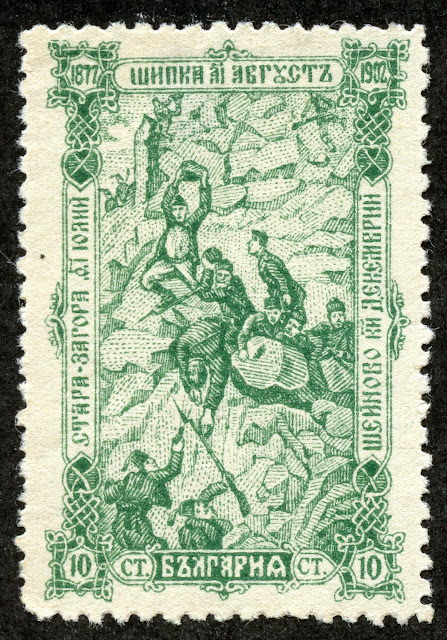 bigblue1840-1940.blogspot.com/2015/03/bulgaria-1902-battle-of-shipka-pass.html bigblue1840-1940.blogspot.com/2015/03/bulgaria-1902-battle-of-shipka-pass.htmlThe 1887 Battle of Shipka Pass is viewed even today as one of the seminal moments in the development of the Bulgarian nation. To commemorate the occasion on the 25th anniversary, a three stamp lithographed set depicting the battle at Eagle's Nest was issued in 1902. The most successful forgery- and quite plentiful in the packet trade- was distributed by N. Imperato of Genoa, Italy. One reason the 1902 Shipka Pass N. Imperato forgeries are ubiquitous in collections is that they are quite good! Careful examination is required to separate them out. |
|
rod222
Member 
Posts: 11,064  What I collect: Worldwide Stamps, Ephemera and Catalogues
What I collect: Worldwide Stamps, Ephemera and Catalogues
|
Post by rod222 on Mar 29, 2015 2:41:50 GMT
bigblue1840-1940.blogspot.com/2015/03/bulgaria-1902-battle-of-shipka-pass.htmlThe 1887 Battle of Shipka Pass is viewed even today as one of the seminal moments in the development of the Bulgarian nation. To commemorate the occasion on the 25th anniversary, a three stamp lithographed set depicting the battle at Eagle's Nest was issued in 1902. The most successful forgery- and quite plentiful in the packet trade- was distributed by N. Imperato of Genoa, Italy. One reason the 1902 Shipka Pass N. Imperato forgeries are ubiquitous in collections is that they are quite good! Careful examination is required to separate them out. Great Stuff, Jim ! Fascinating. Surprise, surprise, all my 3 passed muster. Thanks for the in-depth work. Update: All my 4 "duplicates" were genuine. |
|
|
|
Post by jkjblue on Apr 10, 2015 21:51:02 GMT
|
|
rod222
Member 
Posts: 11,064  What I collect: Worldwide Stamps, Ephemera and Catalogues
What I collect: Worldwide Stamps, Ephemera and Catalogues
|
Post by rod222 on Apr 10, 2015 23:20:27 GMT
Fabulous discussion Jim! I'll need to read that several times over to digest. Personally, I am a real Steiner nut, I love his work In my opinion he has just the right amount of "white space" between stamps. I don't particularly care for his treatment of "strip stamps" and do my own page. I am so much involved with Steiner now, I even have my duplicates set up in Steiner page hiearchy. I have scanned all my Steiner pages (I only print the page I can place a stamp on) so when I buy a collection (Let's say Azores) I can flip through my scanned image pages and see which stamps I need to add and mount, those that have better centreing / postmarks etc without getting the album out of the bookcase. Saves enormous time. Too Cold? I have done a 360 on this one, I now do not mind if a page has only one stamp on it, it shows what is missing, and I rather have overkill than missing varieties. A very interesting tangent on stamp collecting, thoroughly enjoyed your observations. |
|
|
|
Post by jkjblue on Apr 11, 2015 0:09:39 GMT
Rod- always enjoy your opinions and musings...  |
|
|
|
Post by jkjblue on Apr 16, 2015 21:52:51 GMT
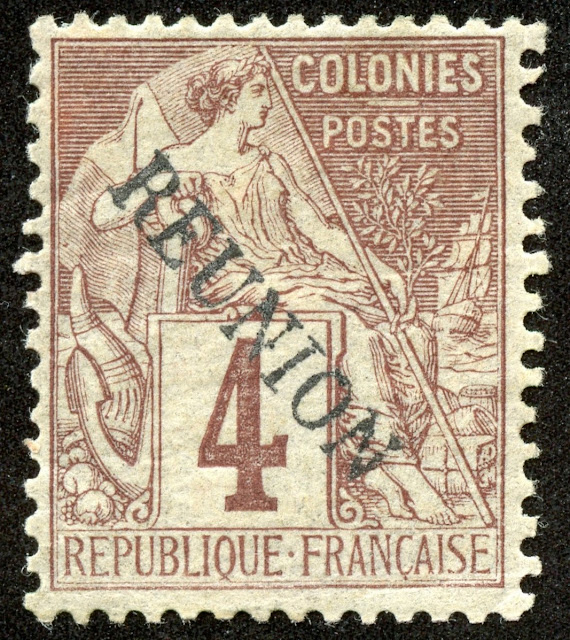 bigblue1840-1940.blogspot.com/2015/04/ClassicStampsofReunion.html bigblue1840-1940.blogspot.com/2015/04/ClassicStampsofReunion.htmlReunion (more properly Réunion) is presently an overseas department of France, but has been in the French realm since 1642. The island, located 120 miles east of Madagascar in the Indian Ocean, was an important stopover on the East Indies trade route, but less so after the opening of the Suez Canal in 1869. |
|
|
|
Post by jkjblue on Apr 22, 2015 23:14:06 GMT
 bigblue1840-1940.blogspot.com/2015/04/rhodesia-british-south-africa-company.html bigblue1840-1940.blogspot.com/2015/04/rhodesia-british-south-africa-company.html"Rhodesia", commonly called by the white settlers in the 1890s after Cecil Rhodes, the founder of the British South Africa Company (BSAC), were lands in southern Africa bisected by the Zambezi River. The stamps issued throughout 1890-1923 are all inscribed "British South Africa Company". Beginning in 1909, the stamps are also either overprinted or inscribed "Rhodesia". The BSAC were expecting that the gold fields of Mashonaland would provide the investor return, but that didn't pan out (pun intended ;-). But the BSAC did build railroads ( Beira, Mashonaland, Rhodesia lines), and actually retained mineral rights until 1964 in Northern Rhodesia (now Zambia). |
|
|
|
Post by jkjblue on Apr 28, 2015 22:51:50 GMT
 bigblue1840-1940.blogspot.com/2015/04/ClassicalStampsofRiodeOro.html bigblue1840-1940.blogspot.com/2015/04/ClassicalStampsofRiodeOro.htmlRio de Oro, geographically along the Atlantic ocean in the southern portion of Spanish (Western) Sahara in northwest Africa, became a Spanish protectorate in 1884 (Berlin Conference). The capital was Villa Cisnernos, and the population was reported to be 24,000. The reality is there is no gold there (despite the name), and the landscape is bleak indeed, with essentially no precipitation, although fog is found along the coast. The small port town of Villa Cisnernos (now Al-Dakhla) had to import drinking water. |
|
|
|
Post by jkjblue on May 4, 2015 18:59:26 GMT
 bigblue1840-1940.blogspot.com/2015/05/ClassicStampsofRomania1858-1880.html bigblue1840-1940.blogspot.com/2015/05/ClassicStampsofRomania1858-1880.htmlThe Principalities of Moldavia and Walachia became effectively united in 1859 through the election of the same Prince or Domnitor, Alexandru loan Cuza. He was a patriot during the 1848 Moldavia and Wallachia revolutionary efforts and "national awakening", and strongly advocated for the union of the two principalities. Interested? Read more about Romania 1858-1880 on my blog! And Rod, thanks for contributing to my Romania collection. I hope you enjoy this post and the next two posts. Go easy on me as I am aware that you love Romania- and know a lot about the stamps! |
|
rod222
Member 
Posts: 11,064  What I collect: Worldwide Stamps, Ephemera and Catalogues
What I collect: Worldwide Stamps, Ephemera and Catalogues
|
Post by rod222 on May 5, 2015 11:08:08 GMT
Au contraire! how pleasing is it, when another shares the same country interest?  Have not read it as yet Jim, so many quality posts on The Stamp forum to read. Look forward to it soon. Alas. It reminds me how I procrastinate. I have heaps of duplicates of Romania for you and others, but still have not attacked mounting of Romania. It still seems overwhelming to begin. I do have enough Hawid mounts now to begin, but where to start? |
|